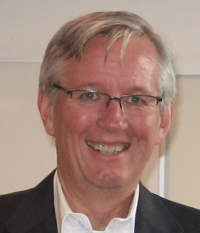
Predictable Revenue And Wild Assed Guessing
Predictable Revenue, a concept popularized by Aaron Ross in the first edition of Predictable Revenue (2011), is important. It’s important to us, perhaps to forecast commission earnings and when we might buy that new car or go on the big vacation.
It’s important to our managers to know whether we are going to make our revenue commitments in the organization. It’s important to other functions in the company, so they know what products to build and ship, or how to have the right services resources deployed. It’s important to our shareholders because it impacts our share price and company valuation.
But it seems that revenue is, increasingly, becoming more difficult. Some research is now showing fewer than 40% of sales people making their quotas (one report shows about 29%). So, to make our numbers, we have to count on 30% of our people significantly overachieving their goals.
Other data shows 60% of funded buying projects end in no decision made, which represents huge lost opportunity both for our customers and our own companies.
I talk to executives about forecast accuracy, most saying, “Dave, we’re hitting our quarterly number…” But when you peel that back, looking at deals that were committed to the forecast at the beginning of the quarter to the deals that actually close, I’m finding less than 30% match. That is 70% of the deals people thought they would close in the quarter didn’t; but “new deals,” deals that didn’t exist or weren’t in this quarter’s forecast were closed.
It turns out deals and the revenue we expect from those deals is becoming increasingly unpredictable. In fact, it is beginning to look more like wild-assed guessing.
People may say, “Well we are making our numbers…..,” but there are a number of problems with this. Within our own organizations, we need greater predictability. Imagine, if we build products, and all the wrong parts were ordered. Even if all our products are software, do we have enough of the right implementation and customer support resources.
More importantly, this unpredictability creates lack of confidence within the organization, suppliers, partners, and shareholders/investors. It also causes us to waste huge amounts of time and resources. Think about it. 60% of the deals we commit resources and time to, take no action, though they originally intended to do so.
Sales forecasting is beginning to look more like wild-assed guessing.
Most importantly, we may be underachieving our potential. Recently, I worked with an organization who, with pride, declared, “For the past 15 quarters we’ve always made our numbers!” But they were the one’s where only 30% of the deals they committed to close in the quarter actually closed in the quarter. And yet they made their number. Think about the 70% they had committed that didn’t close. What if they could have closed just 50% of those? Think also the business they didn’t forecast, but they were able to find and close? In reality, with the resources that were already working, they had the possibility of closing much more! Then look at doing much more for 15 quarters!
Let me be clear. We will never become perfectly predictable. I can’t even count the number of meetings with my manager or even with the boards of companies I worked for, when I made a commitment, and behind my back, my fingers were crossed.
But we have the opportunity to become less unpredictable, and at the same time perform to the opportunity, not the number.
There is no magic, but some basic discipline and imagination:
- Forecasts are about specific deals. The aggregate of those deals represents the number. We forecast the deals which produce the number not the number! We commit to a deal closing in a specific period for a specific value. We need that to be based on customer verified commitments. At the same time, we need to be attentive to the fact that, even well intended, 60% of the time customers fail. So we have to develop strategies to preemptively minimize that–both for the value that it creates for the customer, but also to reduce the probability of failure.
- If we can still make the number, pulling deals forward or pulling new deals out of thin air, how to we formalize that? How do we make this not an act of desperation, but a conscious strategy to build the business, fulfilling our true potential? As sales people and leaders, our goal isn’t just to make the number. As we look at the data, the number can be the thing we pass in achieving our full potential
- We need to look at the 60% who have committed to buy, who we invest resources in, and who fail. Not because they can’t choose, but they get lost on the way, they face uncertainty or indecision. Again, how do we recognize this as a reality, working preemptively with every customer to minimize this as a potential. It changes our value creation strategies, it changes our relationships, it enables customers to achieve what they had hoped to achieve–and it drives revenue. Not long ago, I worked with an executive team. They committed to reduce that from 60% to 50%. We started analyzing the deals that resulted in no decision. We started looking at why the customers failed, what we could do in increasing decision confidence. We are changing the engagement strategies, and though early, we are seeing deals that may not have closed. We are helping customers achieve their goals, making a decision.
- We have to look at our own performance management, coaching, development and other areas. If we are making the number, yet 60% of our people are not making theirs, something is wrong. We will never, and probably should never, have 100% of our people making the number. But to have the majority failing, means we are failing them, and our companies. We can and should do more. It has to be unacceptable to accept these levels of performance–and it’s largely not the fault of our people, but we aren’t putting in place the systems, processes, tools, programs, training, coaching and development, to enable more people to achieve their goals.
We will never have perfectly predictable revenue. But we can and should get better. But most importantly, we need to start performing to our potential, which is always greater than our number.

By Dave Brock
Dave has spent his career developing high performance organizations. He worked in sales, marketing, and executive management capacities with IBM, Tektronix and Keithley Instruments. His consulting clients include companies in the semiconductor, aerospace, electronics, consumer products, computer, telecommunications, retailing, internet, software, professional and financial services industries.
Find out more about Dave Brock on LinkedIn







